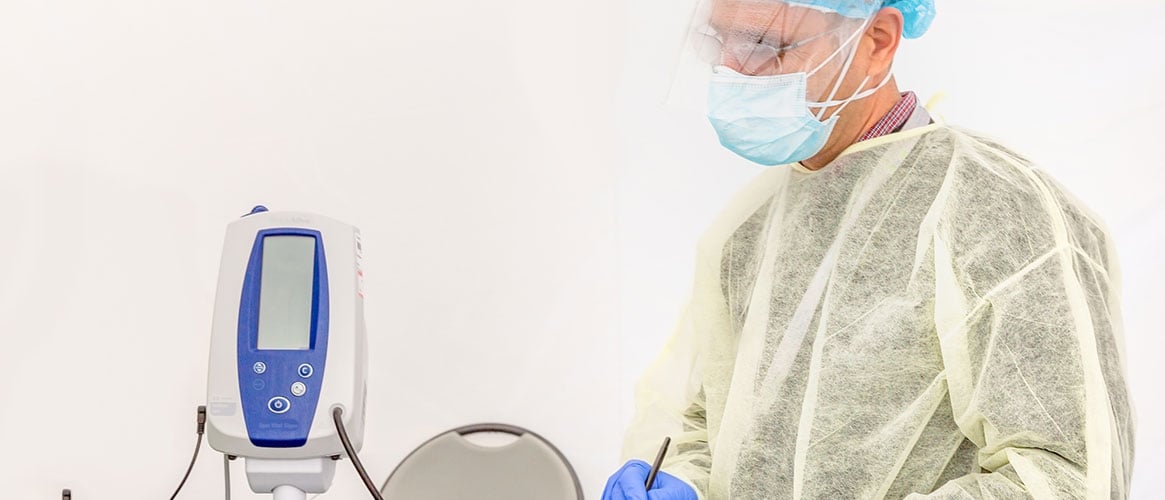Most germs are spread by direct or indirect contact with sick or symptomatic persons. Contact precautions are specific steps that healthcare providers take to prevent physical contact with and accidental spread of germs. Contact precautions are transmission-based precautions to be used in addition to standard precautions that are required for all patients.
What your employees need to know about contact precautions
Germs spread through the air, by hand, and from touching patient-care equipment and other objects. Germs that can cause severe disease via contact with skin wounds, via ingestion, through eyes/nose, or those that can survive on surfaces for long periods of time usually require contact precautions to prevent spread. Examples of types of infections that require the use of contact precautions include:
- Skin infections and rashes
- Respiratory infections that produce coughs, sneezes, or sputum
- Gastrointestinal infections that cause diarrhea and vomiting
- Infections caused by multidrug-resistant organisms, such as Methicillin-resistant Staphylococcus Aureus (MRSA)
What your employees need to do to when using contact precautions
Each patient on contact precautions should have their own patient-care equipment bag (including stethoscope, blood pressure cuff, thermometer, and commode). This helps avoid infecting other patients. If sharing equipment cannot be avoided, clean and disinfect equipment between each use. If a patient on contact precautions must share a room with another person, draw the privacy curtain between the beds to minimize contact.
Other steps your employees must follow include:
- In addition to gloves, put on a gown and other PPE before entering a patient’s room. Include eye protection and, when necessary, shoe coverings.
- Avoid touching objects, surfaces, or the patient with contaminated gloves or other contaminated objects.
- Avoid bringing nonessential items into the patient room and avoid placing personal items or equipment on surfaces in the room.
- Change gloves and wash hands between procedures if the gloves have touched body fluids or substances.
- Encourage patients to wash their hands as often as possible, and assist them when necessary.
- Require all visitors to wear disposable gown and gloves (that are removed and discarded before exit).
- Remove gloves and other PPE before leaving the room.
- Wash hands and use a clean paper towel to turn off the faucet and open doors.
- Apply contact precautions and awareness to frequently touched personal items such as cell phones and pagers.
Clean and disinfect rooms with patients on contact precautions at least daily, with a focus on frequently touched surfaces and surfaces in close proximity to the patient. Discard cleaning materials and EPA registered disinfectants after use. Cleaning of the room should include the removal and replacement of bedside curtains.
What to cover at your safety meeting on contact precautions
Discuss with your employees the importance of using PPE when entering a room where contact precautions are required. Other training topics include:
- Proper method for putting on and taking off a gown, gloves, eye protection, face shield, or respirator
- Proper method of washing hands
- Proper method of cleaning a patient's room
- Proper method of discarding PPE after use
- How to encourage family and friends to wear PPE when visiting
Have your employees practice both contact precautions and standard precautions for a higher amount of protection for your employees when caring for sick patients. Remind them to take the extra steps necessary to protect their health, even if they’ll only be in the room for a few seconds or minutes.

